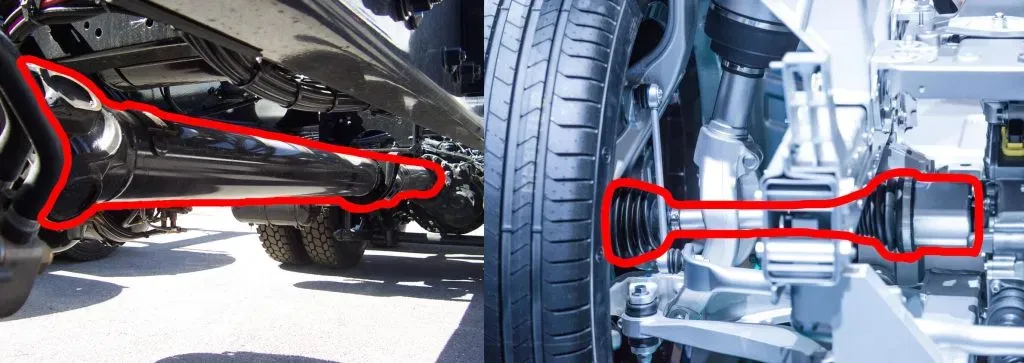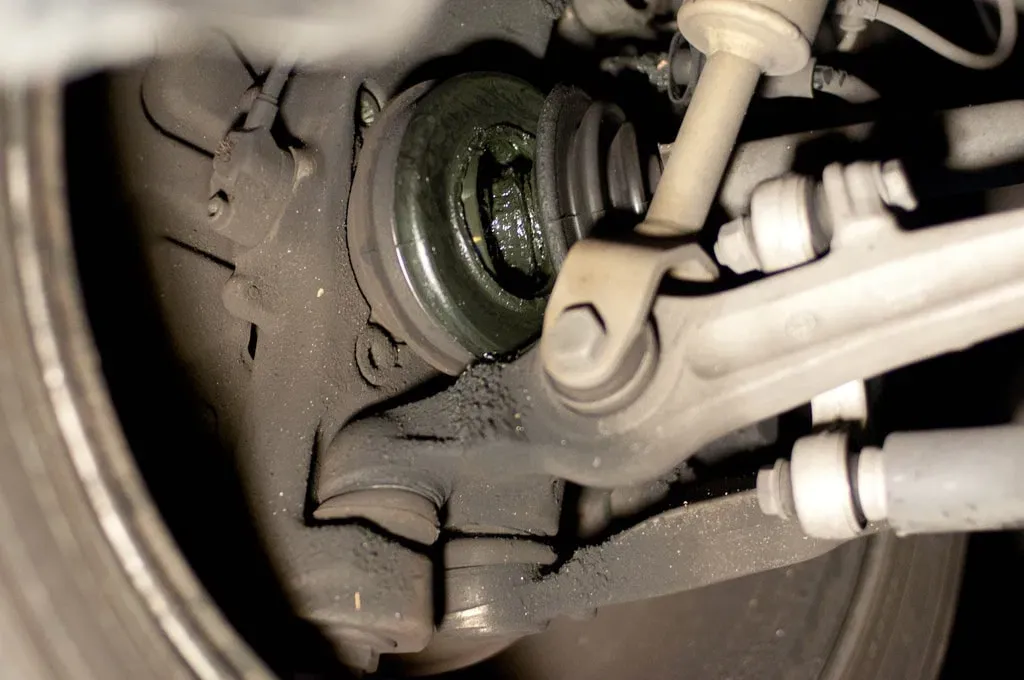WELCOME TO DRIVE SHAFT PARTS
The top Drive Shaft parts Problems and How To Identify It Yourself
Drive shaft parts giving you problems and driving you crazy?
Don’t worry, we are here to help you find out if you have a drive shaft problem - once and for all!
Drive shaft are usually found between the gearbox and front wheels. With the constant twisting and harsh road conditions, drive shaft problems are common for vehicle with mileage above 120,000 kilometres. A worn drive shaft will manifests itself in the following symptoms:
- Spoiled or torn drive shaft cover
- Clicking noise
- Vibration
What is drive shaft parts?
First and foremost, there seem to be some conflicting ideas about what is a “drive shaft”. We’d like to clarify that.
According to Wikipedia, drive shaft is a mechanical component for transmitting torque and rotation. It’s a perfectly accurate definition but the only problem is that it is very broad definition. If you Google the word “drive shaft”, you will see a lot of different pictures of (i) propeller shaft or (ii) Cardan shaft or even (iii) universal joint shaft.
All of which are collectively known as drive shaft by international standard.
How does it work?
So, how does it work and why do we need it? Drive shafts parts serve two purpose:
- Improves the range of motion of your car wheels.
Imagine that if your car wheels are connected to the transmission by a rigid metal instead of a drive shaft. When your wheels go over a bump, the wheels will shifts upward but not the transmission. With enough force, it will snap the rigid metal in half. That’s precisely why we have drive shaft. It improves flexibility and gives the car wheels a greater range of motion to work with. - Transfers rotational energy from the transmission to the wheels.
When you crank your engine, the engine combusts the petrol-air mixture. The heat energy gets converted into kinetic energy which pushes the car engine pistons up and down. Subsequently, the car transmission then harvests this engine power and converts them into rotational energy through a differential. When the differential rotates, it passes the rotation through the drive shaft and then to your car wheels. Finally, as your car wheels start to roll, your car moves forward.
As you can see, drive shaft is a very important part of your car. If you remove it, your car won’t move! That’s why we call it… drive-shaft, because it’s a flexible shaft that drives the wheel.“Drive shaft, drives you forward"
Spoiled or torn drive shaft cover:
A drive shaft cover / constant velocity boot is this black color rubber-like material on your drive shafts. It’s main purpose is to keep contaminants away, and the lubricating grease inside the constant velocity joint.
A torn cover can be detected very easily if you know where to look. All you need to do is put on some dirty clothes, crawl under the car and locate your drive shaft. You will notice a visible crack or a puncture at the drive shaft cover. Most of the time, this will be accompanied by grease splashes around your car tyre.
If you have a spoiled cover, we recommend that you get it changed immediately. Here’s why we’re making such a big deal out of this.
Facts:
Fact is that the drive shaft cover is the only line of defense for your drive shaft parts. It keeps the lubricating grease in, and the moisture and dirt out.
For drive shafts and any moving parts really, it is always important to have lubricating grease. It cushions and reduces metal-to-metal contact within the constant velocity joint. Think of them like airbags. The ball bearings inside of your drive shaft is better off hitting a soft material rather than banging straight-on to the metal wall. Without the lubricating grease, the metal will start collide against each other and wear out significantly faster.
To make matter worst, when the constant velocity boot is torn, it opens up opportunity for moisture and dirt to get into your drive shaft. When moisture get in contact with metal, it will start to form rusts and eat into your metal. Needless to say that it ruins the structural integrity of your drive shaft. Dirt and sand on the other hand, will grind against the metal part of your drive shaft and wear out your drive shaft way faster than it should. It’s like having sandpaper inside the constant velocity joint, definite a big no-no.
We hope we don’t sound bias because we do repair drive shaft. But, we hope that you see the reasoning and the value of detecting and repairing it earlier. Depending on how early you get it repair, it can mean huge savings on your car maintenance bill.
If the drive shaft is still in pristine condition, other than the fact that the cover broke, you can simply put in new grease, and replace the cover. It’s a simple repair and will cost you way lesser than replacing the entire unit. This is the single most important and cost-effective way of maintaining it.
Although I do have to say that it is easier said than done because when you have a spoiled or torn drive shaft cover, it often go unnoticed. Why? Because a torn drive shaft cover does not show any symptoms other than the puncture itself. When we do not change the cover, the drive shaft deteriorate at an exponential rate and you will start to notice noise and vibration.
It’s like a ticking time bomb!
That being said. If you are determined enough, you can do a routine inspection once every week or so. As soon as you find out that you have a torn cover, phone your foreman immediately to get it serviced.
If you have a worn drive shaft… Get in touch with us! As a drive shaft & steering rack specialist who have been in the industry for close to three decades, you can be rest assured that your car will be in good hands. "Until then, drive safe and drive smart!"
QUICK CONTACT FORM


